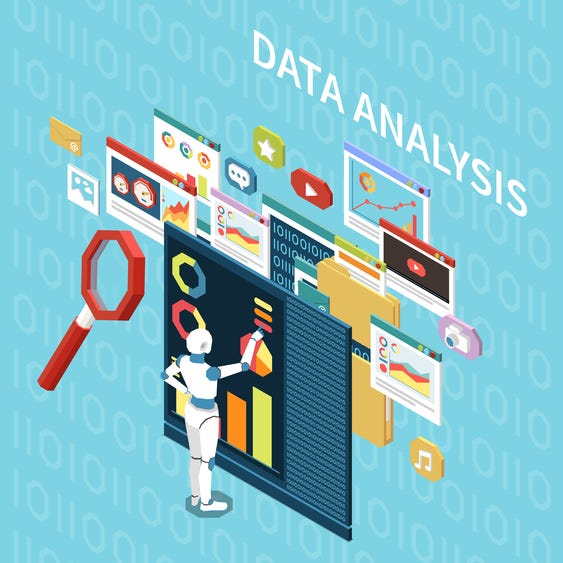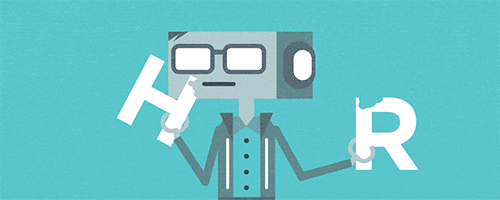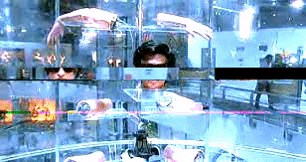Digitalization and the new technological possibilities that artificial intelligence (AI) bring drive a massive change in the workplace environment. But when we talk about this, a very influential and debatable question is likely to come up,
Will AI replace HR?
In the last few years, AI has gained a lot of traction in the HR domain. Questions have shifted from concerns about AI leading to job loss to exploring how this technology impacts the future of HR. Can AI replace entire HR roles, or will it be a powerful enabler? In this process, we have slowly started welcoming the use of artificial intelligence.
These sophisticated computer programs excel at recognizing patterns, planning, and adapting in ways that mimic human thought. Unlike people, however, who can grow tired, bored, or bring unconscious biases into their decisions, AI programs are fast, tireless, and efficient.
A 2019 study shows that AI is redefining not only the relationship between worker and manager but also the role of a manager in an AI-driven workplace.
Humans have certainly made progress in this digitized age. In the field of business, artificial intelligence has generated improvements to almost every business process.
AI is Shaping The Way We Work!

Artificial intelligence makes use of machine learning to mimic human intelligence. This intelligence uses its intellect to recruit new hires. It analyzes job applicants to find the best candidate for the job.
Natural language processing, chatbots, sentiment analysis, facial expression recognition, visual perception, speech recognition, tone analysis, and decision-making are some artificial intelligence features employed in the AI interviewing process.
Let’s take a quick look at areas in HR where AI can enable and enhance efficiency.
6 Areas AI Can Make a Difference In
1. No more paper resume screening, at least for entry-level roles
HR departments at large enterprises receive hundreds of resumes for every opening. And every resume deserves a look if you’re to identify the best-fit talent.
Expectedly, this takes up many staff hours but cannot be automated through simple business rules either. Simple business rules wouldn’t be able to capture the nuances of what makes a best-fit candidate.
This is where AI comes in. An AI engine learns from your hiring history, analyzes the company culture, and ranks applicants in order of their fitment. But remember that as a recruiter, it is your role to ensure that AI is doing its job well and not reinforcing discriminatory hiring practices.
2. Remote AI proctoring
With AI-based remote proctoring and invigilation technologies, a recruiter can ensure that candidates do not indulge in unfair means during the assessment. It ensures the authenticity of the assessment taken by the candidates using AI proctoring.
AI-enabled Remote Proctoring can help:
- Detect Identity Fraud
- Analyze cheating behavior
- Discover Content Theft
Recruiters can use AI technologies like pattern recognition, voice recognition, facial recognition, eye movement detection, and mouth detection for remote proctoring.

3. Better Employee Engagement Surveys
Another HR task that demands both manual and intellectual effort is conducting employee engagement surveys. However, you can streamline this process using an AI chatbot. It can ask employees questions, record their answers, and analyze them for insights. This not only saves HR hundreds of hours annually but also boosts participation rates among the workforce.
With AI, tasks like distributing surveys across various channels or following up with employees can be eliminated. This frees up time to focus on analyzing responses and creating a personalized employee experience strategy for your team.
4. Passive candidate at your fingertips, with a high chance of first-time-right
In a competitive hiring environment, recruiters frequently explore passive candidates to fill openings. This involves a meticulous examination of social media, professional profile platforms, and job boards to pinpoint potential prospects.
AI streamlines this process by scanning diverse sourcing channels, automatically generating a shortlist of candidates for your review. Integration with historical company HR data allows AI to “learn” from past successes and failures.
Taking it a step further, AI can identify candidates’ preferred communication platforms. For example, a Gen Zer might be more at ease with Instagram, while millennials may lean towards Facebook.
5. Low-effort Pre-hire Assessments through AI Video Analysis
Pre-hire assessments require the HR team to carefully evaluate each candidate before conducting interviews with the business team. This step in the hiring process is particularly critical for mid- to senior-level hires. However, it takes a lot of time, and HR often has to work around busy candidate schedules to fit in an interview.
AI-led video analysis allows candidates to shoot a video at their convenience and share it with recruiters. The AI analyzes video data to identify work style, collaboration potential, and general cognitive ability.
6. Trial-and-error in Workforce Scheduling is Over
Workforce scheduling is always a complex task. This becomes even more difficult when you have a large field workforce, contingent employees, or a remote team.
Traditionally, people use spreadsheets and to-do lists for scheduling. But it gets tricky, especially when things change a lot or more people are needed suddenly.
However, AI changes all this. It makes things better by planning your workforce effectively. It can create schedules that match what employees prefer and also ensure compliance with labor laws. Moreover, HR doesn’t have to do the schedules manually—AI can handle it and send alerts when there’s new information.

While artificial intelligence may imply smarter decisions, AI systems need training and monitoring to work well. In our domain, they can potentially harm a candidate’s chances, damage an employee’s reputation or create an incorrect performance appraisal. We have to be vigilant.
Challenges in Using AI in HR
1. Data Management Challenges:
- To begin with, most companies grapple with the effective management of HR data, scattered across multiple systems—typically five to seven different record systems.
- Additionally, applying algorithms to such dispersed data sets can lead to misleading results.
- Overcoming this challenge demands the consolidation of people-related data into a single, analyzable place.
2. Policy-related Challenges
- On the policy front, articulating how employee data will be used and ensuring it avoids misuse presents a significant hurdle.
- While employees generally agree to data access when joining, maintaining adherence to policies is crucial.
- Consequently, companies must consistently stick to their promises of utilizing data for positive purposes.
3. Subjectivity in HR Decision-making:
- Shifting to decision-making, HR decisions rarely have clear-cut answers; there’s rarely complete agreement on the best candidate or who should be promoted.
- While algorithms may help reduce human bias, they fall short of ensuring 100% accuracy due to the inherent subjectivity in many HR decisions.
Why We Still Need the “H” in HR
AI excels at tasks that rely on data processing and pattern recognition, completing these functions faster and more efficiently than human beings can. This makes AI a valuable tool for automating many aspects of HR.
However, the “human” aspect of human resources shouldn’t be neglected. From making the final hiring decisions to discovering creative ways to keep workers engaged, HR directors understand their employees and their organization in ways AI software cannot. AI is merely a tool that provides HR team members with more time to connect with employees, shape company culture, and address emerging issues.

Additionally, not every employee is comfortable adopting unfamiliar technologies. HR staff can play a pivotal role in easing the transition to AI, demonstrating to employees how incorporating AI into HR processes can enhance productivity and efficiency for nearly everyone.
Sci-fi often portrays AI as a futuristic technology driven by robots and autonomous machines. However, the reality is different — AI can seamlessly integrate into our daily lives. While it may lead to the elimination of certain jobs, it also provides an opportunity to redirect our efforts in new and valuable directions. The same principle applies to HR.
It’s crucial to grasp a fundamental reality—AI is a permanent presence. However, it’s essential to clarify that AI is set to take over specific HR jobs, not the entirety of HR. roles.


